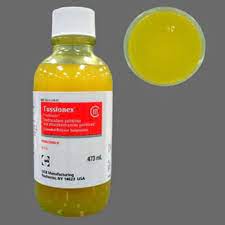Butadex for Horses: What You Need to Know
In the world of equine medicine, new treatments and medications are regularly introduced to address various health conditions. One product that has sparked interest is Butadex. Though it may not be as widely recognized as some other equine medications. Butadex has earned attention for its potential benefits in treating pain and inflammation in horses. This blog post will explore what Butadex is, how it works, and what horse owners should know about its uses and safety.
What is Butadex for Horses
Butadex is an anti-inflammatory and pain relief medication that is used primarily to manage conditions involving pain, fever, and inflammation in horses. It belongs to a class of drugs known as non-steroidal anti-inflammatory drugs (NSAIDs). While the exact formulation may differ depending on the manufacturer, Butadex is typically used to alleviate discomfort associated with joint issues, soft tissue injuries, or other painful conditions.
The active ingredient in Butadex is generally related to phenylbutazone (commonly known as “bute”), a widely used NSAID in horses. This makes Butadex particularly useful in managing lameness, arthritis, and other musculoskeletal disorders that are common in equine athletes or aging horses.
Uses of Butadex in Horses
Butadex is prescribed for several specific conditions in horses, including:
- Arthritis: Arthritis is common in older horses or those subjected to repetitive physical stress, such as those in racing, dressage, or jumping. Butadex helps reduce inflammation in the joints, easing discomfort and improving mobility.
- Musculoskeletal Injuries: Horses often sustain injuries to their muscles, tendons, or ligaments, especially in competitive or working environments. Butadex can provide pain relief during the healing process and reduce inflammation, promoting faster recovery.
- Lameness: Lameness in horses can be caused by a wide variety of factors, from trauma to infections to degenerative conditions. Butadex is commonly used to manage the pain and inflammation associated with lameness, giving the horse temporary relief while the underlying cause is addressed.
- Fever and Inflammation: In cases where a horse develops a fever due to infection or other inflammatory conditions, Butadex can help reduce the fever and alleviate general discomfort.
- Colic Pain Management: Colic, a common and potentially life-threatening condition in horses, can cause severe abdominal pain. Butadex may be used in some cases to alleviate this pain, although it should be administered with caution under veterinary guidance, as NSAIDs can sometimes mask more severe symptoms.
Benefits of Butadex
- Effective Pain Relief: Butadex provides quick and effective pain relief, allowing horses to remain comfortable even when dealing with chronic or acute pain.
- Anti-Inflammatory Properties: Its anti-inflammatory action helps reduce swelling in joints and soft tissues, making it particularly useful for horses with arthritis or post-injury recovery.
- Improved Mobility: By reducing pain and inflammation, Butadex can improve a horse’s range of motion and overall mobility, which is crucial for horses involved in sports or heavy physical activity.
- Fever Reduction: When used for conditions that cause fever, Butadex helps bring down body temperature, ensuring the horse remains stable while other treatments are administered.
Safety and Considerations
Like all NSAIDs, Butadex comes with certain risks and side effects that must be carefully managed to ensure the horse’s safety. It is essential to use this medication under the supervision of a qualified veterinarian. As improper dosing or prolonged use can lead to complications.
Side Effects of Butadex
While Butadex is effective in managing pain and inflammation, there are potential side effects to be aware of:
- Gastrointestinal Issues: One of the most common side effects of NSAIDs in horses is the risk of gastric ulcers. Prolonged use of Butadex may irritate the stomach lining, leading to ulcers, colic symptoms, or other gastrointestinal issues.
- Kidney and Liver Damage: High doses or long-term use of Butadex can cause strain on the kidneys and liver. Which may result in damage to these organs. This risk is heightened in dehydrated or older horses.
- Masking Symptoms: While Butadex provides pain relief, it may mask the symptoms of underlying issues. Making it harder to diagnose and treat the root cause of a horse’s discomfort.
Dosage and Administration
The correct dosage of Butadex will vary depending on the horse’s size, age, and the specific condition being treated. It is critical to follow a veterinarian’s instructions when administering this medication to avoid potential side effects. Butadex is typically given orally in the form of powder or paste. Though injectable forms may be available for certain situations.
Special Considerations for Competition Horses
For horses involved in competitive sports, it is essential to check the regulations regarding the use of NSAIDs like Butadex. Many equine sporting bodies have strict rules governing the use of such medications. And horses may need to be “drug-free” for a certain period before participating in events.
Conclusion
Butadex is a valuable tool in managing pain, inflammation, and fever in horses. Whether it’s used for arthritis, musculoskeletal injuries, or general pain relief. This medication can help improve a horse’s quality of life when used appropriately. However, as with all medications, it’s crucial to use Butadex under veterinary supervision to ensure safety and efficacy. By understanding its uses, benefits, and risks, horse owners can make informed decisions about their horse’s care.
















Reviews
There are no reviews yet.